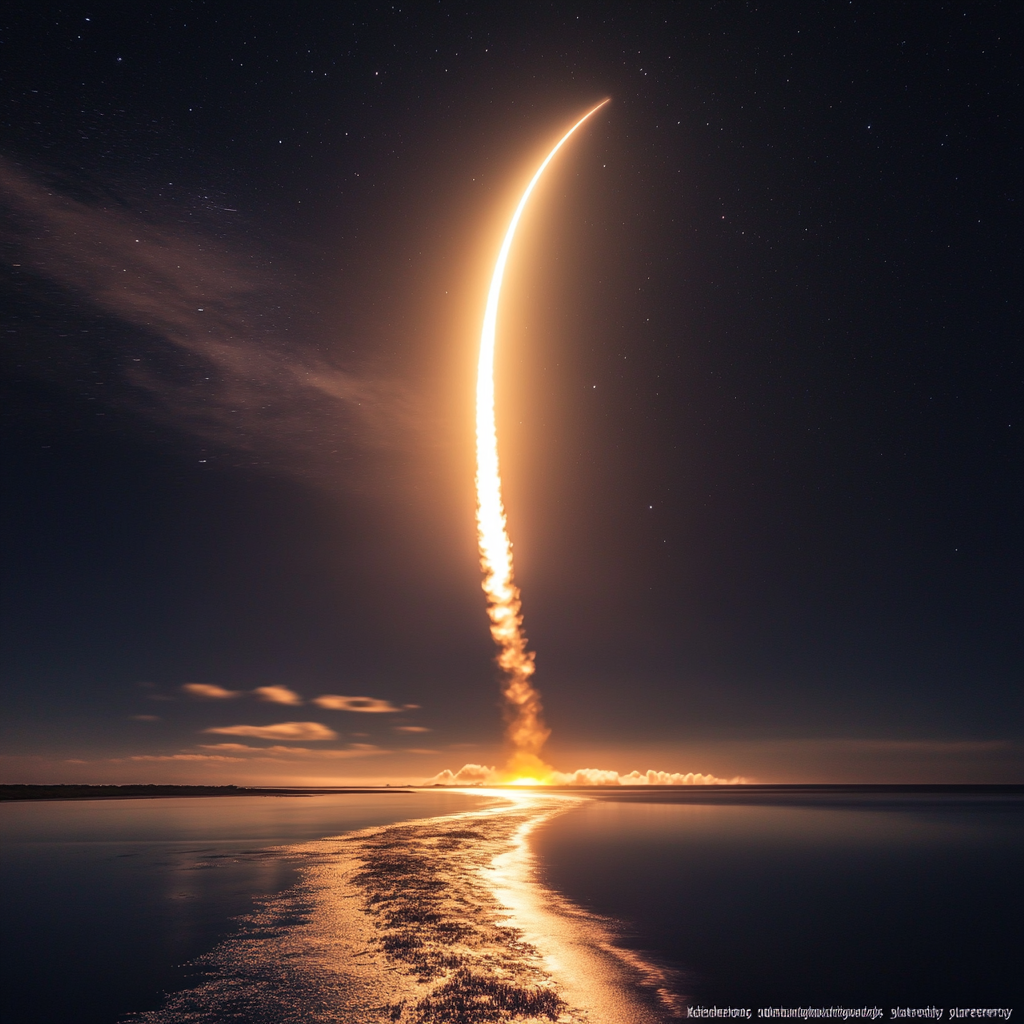
Human Spaceflight: Exploring the Final Frontier
Human Spaceflight: The Epic Launch of SpaceX Crew-9 to the International Space Station
Human spaceflight is no longer the exclusive domain of astronauts in government suits floating in sterile spacecraft. We’re witnessing a thrilling transformation in space exploration, driven by the audacity of commercial space companies and the ambition of private entities. A prime example of this revolution is the SpaceX Crew-9 mission, which blasted off on September 28, 2024, taking the next leap into the cosmos. Buckle up as we delve into this mission and the broader tapestry of human space travel.
A Space Odyssey: The SpaceX Crew-9 Mission
Let’s get into the specifics of this audacious endeavor. The Crew-9 mission represents the ninth operational crewed flight of SpaceX’s Crew Dragon spacecraft, an impressive feat by any measure! This high-energy launch took place at the illustrious Space Launch Complex-40 at Cape Canaveral Space Force Station in Florida—a site as historic as the moon landing itself. This mission had the added distinction of marking the first time a human spaceflight launched from this pad, which is usually occupied by military and satellite missions. Talk about exciting!
- Launch Time: The countdown clock hit zero at 1:17 p.m. EDT (17:17:20 UTC) on a Saturday that will go down in history. If that’s not precision engineering, I don’t know what is.
- Crew Members: SpaceX didn’t skimp on star power. NASA astronaut Nick Hague and Roscosmos cosmonaut Aleksandr Gorbunov took center stage for this mission.
- Spacecraft: The illustrious Dragon Freedom, a name that evokes thoughts of adventure and exploration, was the spacecraft in question.
- The Booster: Reusability is the name of the game in today’s space industry. The first-stage booster, named B185, was on its second journey to the stars, bringing with it the thrill of sustainability and innovation. It was scheduled to return gracefully to Earth after about eight minutes of awe-inspiring ascent.
Mission Objectives and Groundbreaking Goals
Let’s discuss what it’s all about. The primary goal of the Crew-9 mission? To ferry our two brave astronauts to the International Space Station (ISS) for a science mission that would last around five months. You see, this flight is part of NASA’s innovative Commercial Crew Program, which allows private companies like SpaceX to transform space travel from a government-only operation to an arena where commercial players can seize the day. Isn't that a refreshing idea?
The day was not without its challenges, of course. Space missions are always at the mercy of Mother Nature, and Crew-9 was no exception.
Weather Woes and Adjustments
The initial crew roster was a star-studded line-up: Commander Zena Cardman, Pilot Nick Hague, and Mission Specialists Stephanie Wilson and Aleksandr Gorbunov. But alas, changes took place to accommodate the return of astronauts Barry "Butch" Wilmore and Sunita "Suni" Williams aboard a different Dragon spacecraft in February 2025. Only two crew members took the plunge for Crew-9, maintaining the delicate balance of science and human safety.
Then there was the specter of Hurricane Helen looming over the Northeast Seaboard, leading to nail-biting moments for the launch team. The meticulous crew worked tirelessly to ensure that conditions were favorable—the sea state and weather had to be just right for the abort contingencies. Nothing less would do!
The Media Circus
Let’s not forget the spectacle surrounding the launch. In our age of digital connectivity, NASA put on an epic show of their own via various platforms, disseminating information through NASA+, their website, and a sea of social media channels. Nothing speaks to our culture like live coverage of a spacecraft being launched into the unknown!
- Prelaunch Coverage: Kicking off at 9:10 a.m. EDT, eager viewers were treated to detailed insights and thrilling anticipation.
- Launch Coverage: People glued their eyes to live video and audio streams, collectively holding their breath as they positioned themselves to witness history.
- Docking Coverage: As the Dragon Freedom approached the ISS, NASA+ resumed its coverage, infusing excitement into every moment leading up to the hatch opening and the ceremonial welcome aboard the ISS.
The Regulatory Safety Net
Now, let’s sprinkle in a little reality check courtesy of our old friends at the Federal Aviation Administration (FAA). Yes, human spaceflight needs a watchful guardian to keep things safe and sound. Here’s what the FAA is cooking up behind the scenes:
- Safety Regulations: The FAA ensures that commercial space operators jump through all the right hoops to obtain a license. They check if the rockets do what they’re supposed to—launch and land safely, of course—and ensure that the crews are well-versed in both normal and emergency procedures.
- Informed Consent: Just like insurance policy fine print, space operations must clearly inform all participants about the risks they’re taking. Spoiler alert: it’s not for the faint-hearted!
- Vehicle Licensing: Before any brave soul boards a launch, the FAA demands proof of the vehicle’s performance during a real-world test. Sorry folks, no shortcuts allowed!
The Bright Future of Human Spaceflight
As we look ahead, human spaceflight is slated for an extraordinary metamorphosis. The rise of commercial operators is set to pave the way for unprecedented numbers of ordinary folks reaching for the stars. The FAA has even started recognizing and celebrating these modern-day space adventurers on their Commercial Human Space Flight Recognition webpage. If that doesn’t encapsulate the spirit of exploration, I don’t know what does!
The Crew-9 mission is just a crystal-clear reflection of where we’re heading. It showcases the collaboration between NASA, enterprising companies like SpaceX, and regulatory bodies dedicated to making space travel as safe as it is thrilling. As we continue to expand the horizons of exploration, missions like Crew-9 reveal the vital importance of safety, innovation, and international cooperation.
So why let this experience slip away into the depths of space without staying updated?
Let’s Stay Connected
Want the latest buzz on human spaceflight and space-related missions? Don’t just sit there—join the adventure! Subscribe to our Telegram channel: @channel_neirotoken and keep your gaze fixed on the stars. Your ticket to a universe of information awaits!
